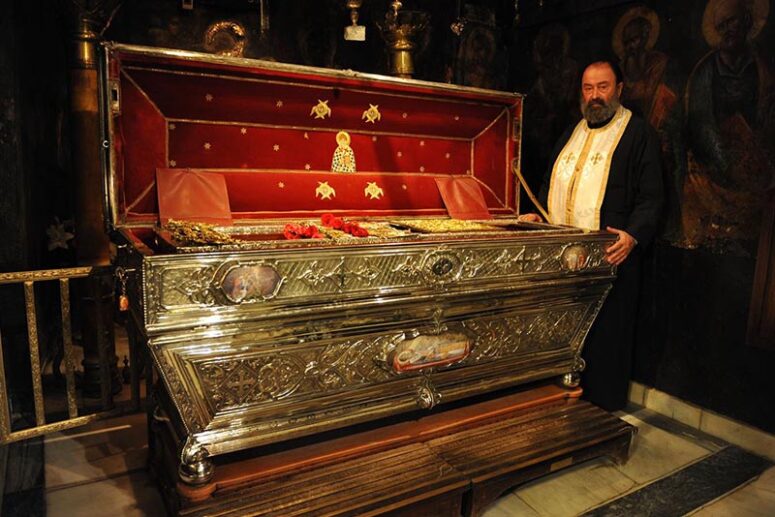
Throughout history, the Church has venerated and celebrated individuals who have lived lives pleasing to God, becoming vessels of the Holy Spirit. These saints, in their transition to the divine, often leave behind their relics on Earth. These sacred remains become conduits of grace, through which the Lord manifests incredible miracles. Countless are the testimonies of those receiving healing for spiritual, mental, and physical afflictions through the faithful touch of these relics.
Equally astonishing are the instances where the relics themselves are at the heart of inexplicable and wondrous events. These occurrences confound scientists and sceptics alike, demonstrating that an unseen spiritual realm exists, one that transcends and overrules the natural laws of our material world by divine will. Our article delves into several such extraordinary incidents involving the relics of saints.
A Miraculous Path Through the Sea: The Relics of Saint Clement
Saint Clement of Rome, a Holy Martyr ordained by the Apostle Peter, remained a devoted disciple throughout his life. His unwavering faith led to his martyrdom by a pagan ruler, who had him cast into the depths of the sea with an anchor around his neck, intending to prevent his followers from retrieving his body.
In response, two of Saint Clement’s disciples called the Christian community to prayer along the shore, beseeching God to reveal the location of the saint’s relics. Remarkably, their prayers were answered: the sea withdrew several kilometres from the coast, creating a path along the seabed as though it were dry land. The faithful journeyed across this miraculous path until they discovered a marble cave, akin to a church. Within, they found the saint’s body and the anchor. Although they initially intended to move the relics, a divine revelation instructed the disciples to leave them within the cave. Henceforth, every year for a week surrounding the martyr’s memorial day, the sea receded, allowing Christians to venerate Saint Clement’s relics.
This extraordinary occurrence persisted for centuries until the 11th century when, through divine providence, the relics of Saint Clement were miraculously uncovered by the holy figures Cyril and Methodius, venerated as Equals-to-the-Apostles.

The Myrrh-Streaming Skulls of the Kiev Caves Lavra
Within the hallowed confines of the Kiev Caves Lavra, a site steeped in awe-inspiring mysteries and legends, reside the relics of over 120 saints. Among these sacred remains, many lie incorrupt in glass-encased coffins, some emitting a faint, heavenly scent.
Particularly remarkable within the Lavra Caves are the skulls of 24 unidentified saints, first documented in the 15th and 16th centuries. These skulls exhibit a miraculous phenomenon: they exude myrrh, a colourless, oil-like liquid with a sweet fragrance and attributed healing powers. When this myrrh flows, the skulls become as pliable as wax. To collect the sacred liquid, the skulls are placed within special glass vessels.
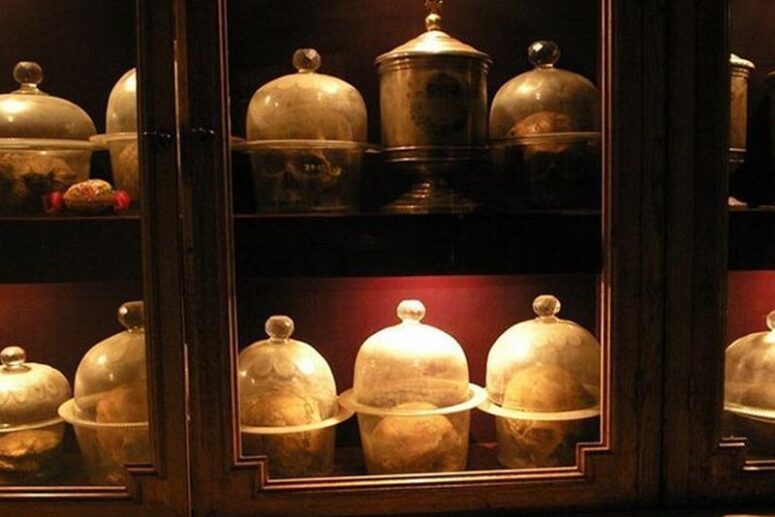
Despite extensive scientific examination, the source of the myrrh on these skulls remains an enigma. Intriguingly, the myrrh contains proteins identical to those found in living humans, showing no signs of decomposition. This enduring mystery continues to fascinate and mystify, underscoring the unfathomable depths of the spiritual world.
Obedience Beyond the Grave: The Miracles of St. Mark the Grave Digger
In the hallowed catacombs of the Kiev-Pechersk Lavra, tales of the miraculous intertwine with the lives of its saints. One such story belongs to St. Mark the Grave Digger, a monk of the 11th century, who was bestowed with a divine gift to command the dead.
A striking instance of St. Mark’s gift occurred when he was unable to properly prepare a grave for his recently deceased brother. The grave was too cramped to straighten the brother’s garments or anoint his body with oil. In this moment of need, St. Mark requested the deceased to assist. To the astonishment of those present, the deceased brother raised himself slightly, took an oil vessel, and anointed himself crosswise on his chest and face. After adjusting his clothes, he lay back down, resuming his eternal rest.
In another extraordinary event, St. Mark asked a monk, who had died unexpectedly, to delay his passing for a day until a suitable grave could be prepared. Remarkably, the monk complied, returning to life for an additional twenty-four hours.
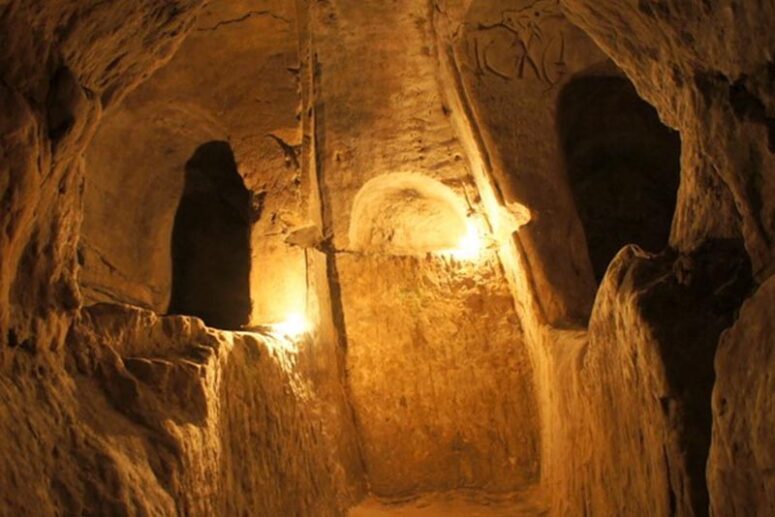
A third notable incident involved two monastic brothers. The younger brother passed away during the elder’s absence. Upon returning, the elder brother found the younger occupying his designated place in their shared coffin and expressed his displeasure to St. Mark. In response to this complaint, St. Mark humbly asked the deceased to move to the other side of the coffin. Miraculously, the deceased complied. Witnessing this, the elder brother was overcome with remorse and sought St. Mark’s forgiveness for his earlier outburst. These extraordinary accounts from the Kiev-Pechersk Lavra affirm the profound mysteries and spiritual wonders that transcend our earthly understanding.
Divine Retribution: The Miraculous Fire at Pskov-Pechersk Monastery
The Holy Dormition Pskov-Pechersk Monastery, renowned for its God-given caves, has been a witness to numerous miracles, particularly those involving the relics of Saint Vassa. She, along with her husband, Saint Jonah, discovered these caves in the 14th century, establishing a monastic community.
One of the notable incidents concerns the burial of Saint Vassa. Saint Jonah attempted to bury her coffin near the caves three times, only to find it resurfaced each morning. This mysterious occurrence was interpreted as a divine sign, indicating the Lord’s preference for a different burial tradition. Henceforth, coffins were no longer buried in the ground but were instead placed in special niches or crypts within the caves, layered atop one another.
Another extraordinary event took place during the 16th century, amidst one of the Livonian attacks on the monastery. An audacious knight, intent on desecrating the sacred tomb of the Venerable Vassa, attempted to pry open the coffin lid with his sword. In an instant, he was struck down by a divine fire that erupted from within the tomb, resulting in his immediate death. This act of divine retribution left a visible mark on the tomb, a scorch trace still observable today. Visitors to the site often report sensing a faint, holy fragrance emanating from the tomb, a lingering testament to the sanctity of Saint Vassa and the divine protection enveloping her resting place.
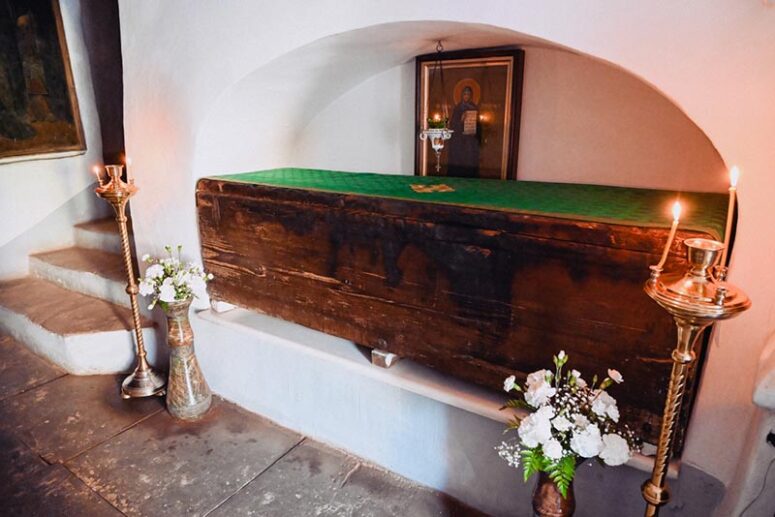
The Seated Saint: The Unique Relics of St. Athanasius
In the Annunciation Cathedral of Kharkov, Ukraine, rests an unusual relic that has piqued the curiosity and reverence of many: the relics of St. Athanasius, Patriarch of Constantinople, known distinctively for their sitting position, a rarity within the traditions of the Russian Orthodox Church. This unique posture has led to St. Athanasius being affectionately referred to as “Athanasius the Sitting”. But how did this come to be?
St. Athanasius, once the Patriarch of Constantinople and later the administrator of the see of Thessalonica, was a frequent traveller to Russia. His journeys were for ecclesiastical purposes – to venerate holy sites, and to acquire church utensils and vestments. In the year 1694, during his return to his homeland via Ukraine, St. Athanasius fell gravely ill. This illness led to an unexpected halt at the Mhar Monastery near Lubny in the Poltava region, where he ultimately passed away.
In accordance with the burial customs of Eastern patriarchs, St. Athanasius was interred in a sitting position. Later, his relics were transferred to Kharkov, where they have been revered for the numerous miracles attributed to them. The distinctive posture of these relics serves as a remarkable testament to the saint’s esteemed ecclesiastical status and the revered traditions of the Eastern patriarchs.
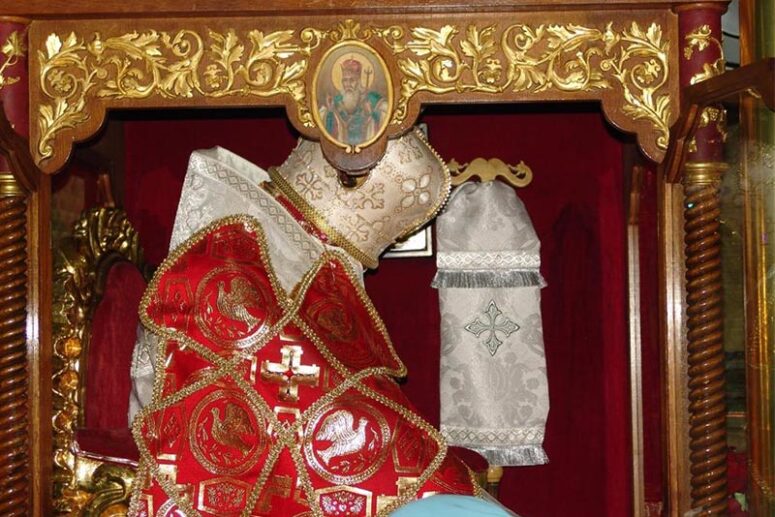
The Revered and Restless: The Miracles of St. Spyridon of Trimiphunt
The relics of St. Spyridon of Trimiphunt, known for their imperishability and numerous miracles, are enveloped in awe-inspiring stories. A particularly fascinating belief is that at times when the reliquary cannot be opened, it is said that St. Spyridon is elsewhere, assisting those in need. This belief is further supported by the saint’s slippers, which miraculously show signs of wear each year, as if he were still walking among us.
A remarkable incident involving St. Spyridon’s relics was witnessed by the renowned Russian writer Nikolai Gogol in 1848. Gogol was present for the Feast Day of St. Spyridon, a time when the saint’s relics are traditionally carried through the city. During this event, a sceptical English pilgrim doubted the authenticity of the saint’s incorruptibility, suspecting the body had been embalmed and possibly bearing incisions on its back.
As the story goes, when this sceptic approached the relics for a closer inspection, to confirm his suspicions, an extraordinary event unfolded before the eyes of all present. The body of St. Spyridon miraculously rose and turned over within the coffin, revealing an unblemished back, devoid of any incisions. Witnessing this, the Englishman and the crowd were astounded to see the saint’s body then return to its original position, a testament to the miraculous nature of St. Spyridon’s relics and the divine power they embody.
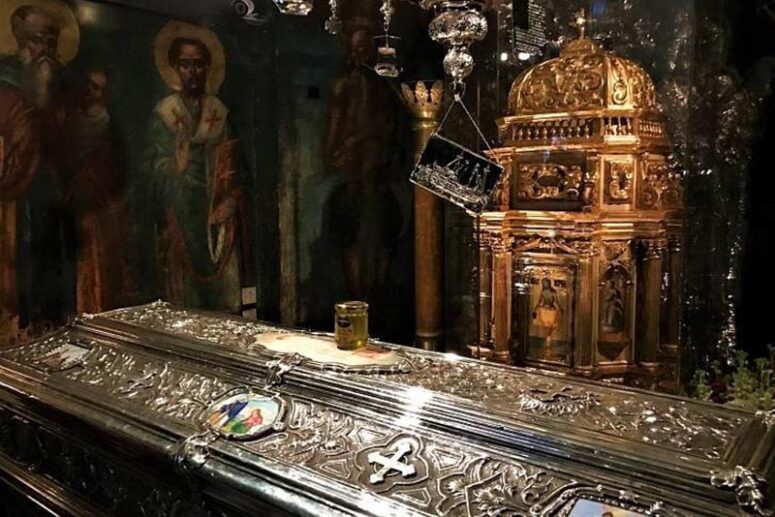
A Solemn Gesture: The Miraculous Acts of Alexander Nevsky and Father Vitaly
In the annals of ecclesiastical history, there are occurrences that defy earthly explanation, exemplifying divine glorification. Such an event transpired in 1263 during the funeral service of the blessed Russian prince Alexander Nevsky, who had taken the monastic name Alexis upon his tonsure.
As the Metropolitan prepared to place a letter of absolution into the hand of the deceased, a miraculous event unfolded. Prince Alexander, though departed, stretched out his hand, received the scroll, and then reverently positioned his hands crosswise upon his chest. This astonishing occurrence, as recounted by the prince’s biographer, left those present in a state of profound shock and awe: “And they were filled with horror, and were hardly able to retreat from his tomb. Their astonishment was unsurprising, for he was dead and the body was brought from afar in winter time.” Through this act, God manifested His glory through His saint.
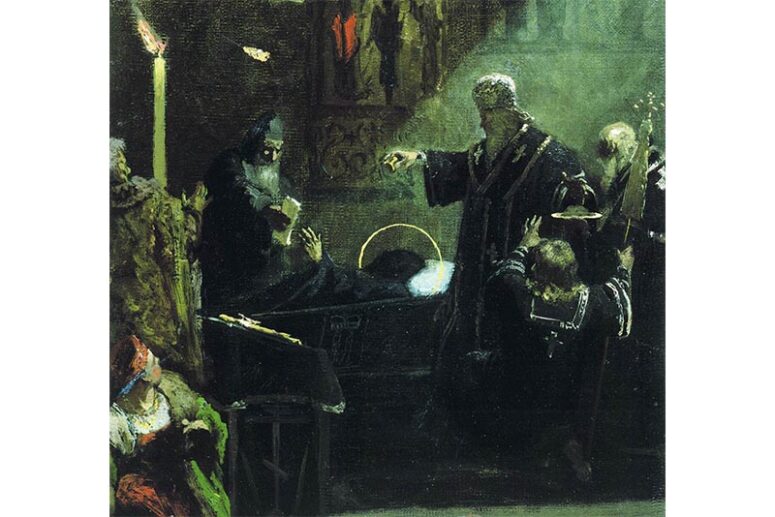
Remarkably, a similar miracle was witnessed centuries later, in 1992, at the church of St. Alexander Nevsky in Tbilisi, during the commemoration of the Blessed Prince on December 5. On this occasion, the revered Schema-Archimandrite Vitaly (Sidorenko), known for his asceticism, was being laid to rest. Fr. Vitaly, who had served in this very church in the latter years of his life, had once prophesied: “To soothe the tears of my sisters in Christ, I will stretch out my hand from the coffin.” True to his word, as a prayer of absolution was placed in his hand during the funeral service, his thumb moved, returning to its original position only after the prayer sheet was secured in place. This incident echoed the earlier miracle of Alexander Nevsky, further affirming the profound mysteries and spiritual wonders of faith.
A Serene Farewell: The Posthumous Smile of Elder Joseph of Vatopedi
In the realm of the sacred, miracles continue to unfold, even in contemporary times. A poignant example is the story of the burial of the revered Athonite elder, Joseph of Vatopedi, who departed this life on July 1, 2009. Following his passing, as per the tradition of Mount Athos, Elder Joseph’s body was clothed in a monastic mantle. When a portion of the fabric covering his face was removed, those present witnessed an extraordinary sight. The elder’s countenance bore a peaceful and happy smile, a serene expression that seemed to transcend the confines of earthly existence.
This smile, a visual testament to the joy and serenity that awaits righteous souls in the Kingdom of Heaven, quickly garnered attention worldwide. Photographs of Elder Joseph’s serene expression circulated far and wide, offering solace and a poignant reminder of the eternal bliss promised to the faithful.
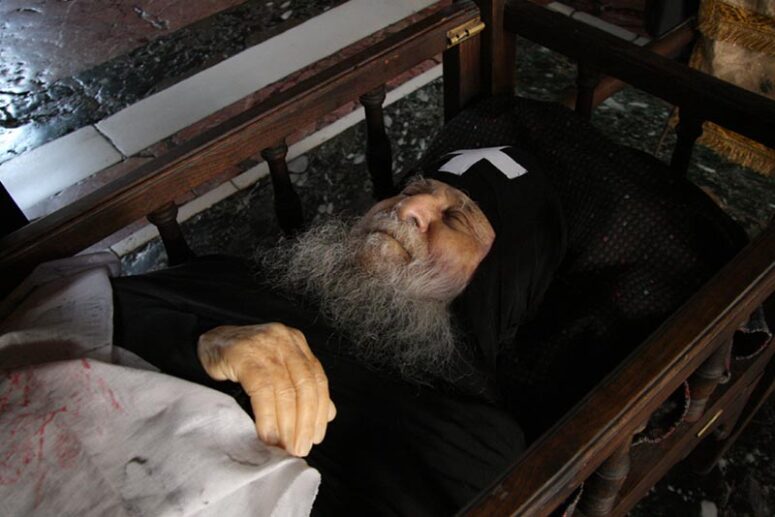
The stories recounted here are but a few examples of the myriad miracles that the Lord manifests through the relics of His chosen ones. They serve to edify and strengthen our faith, reminding us of the boundless wonders of God’s grace. Like stars in the sky and grains of sand on the seashore, God’s miracles are innumerable. Let us continually rediscover and remember them, so that in our times of trial and tribulation, the lamps of our faith remain brightly lit, unwavering in the face of adversity.



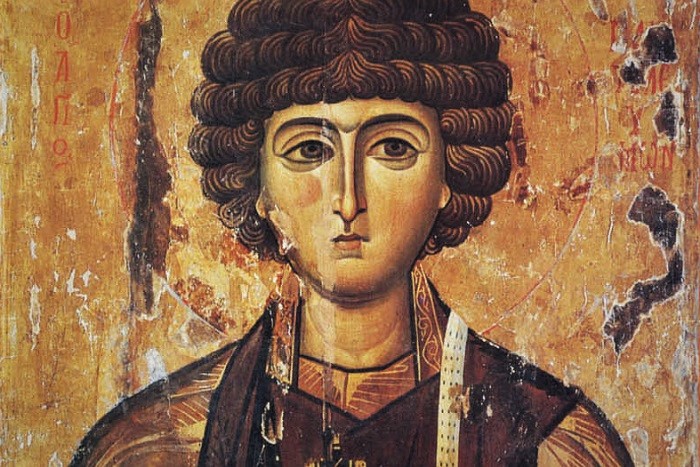
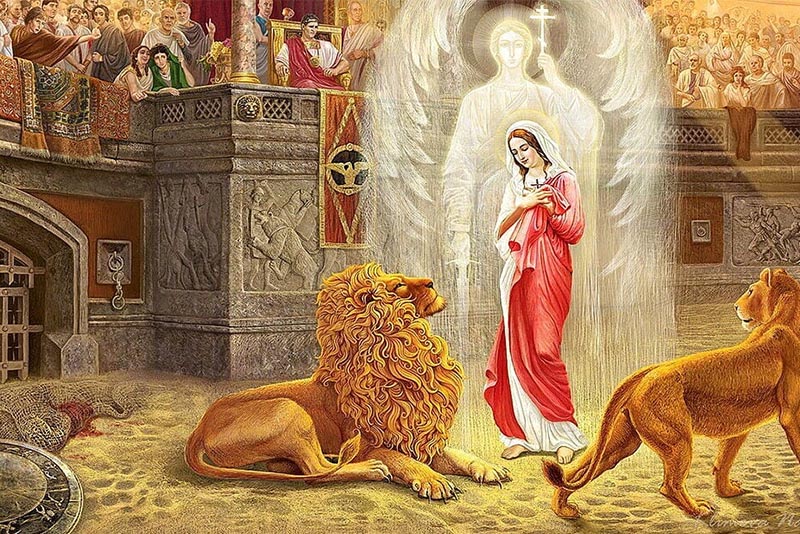
Thank you for this.
Glory to God!
This article is a great testimony to support why the Orthodox Church does not believe in cremation. Thank you.